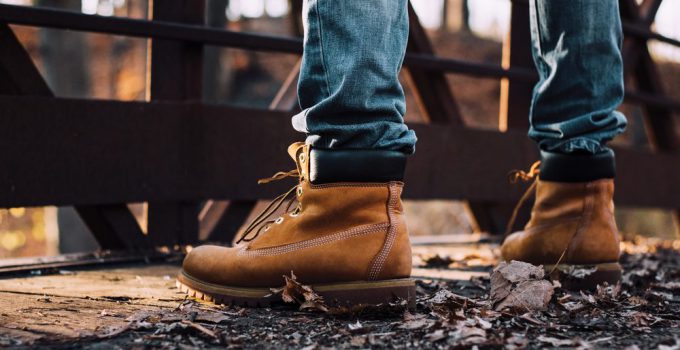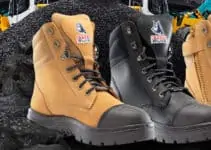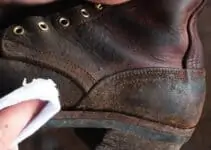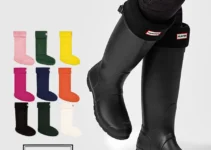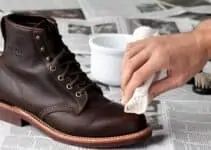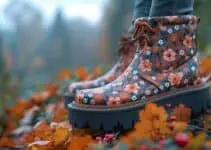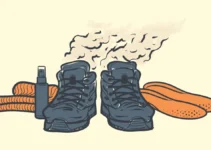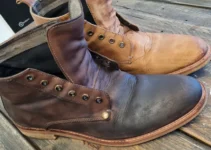Work boots are a necessity for many people these days – from construction workers, farmers and factory employees to outdoor sportsmen (e.g., hunters) or even weekend warriors who like to spend their free time hiking in rugged areas. We all know that working outdoors can be hard on our health if we don’t take proper care of ourselves by keeping our bodies properly hydrated. This is especially true when it comes to protecting yourself against harmful bacteria as well as moisture-related illnesses such as trench foot, blisters, athlete’s foot, etc. The good news is you can prevent this problem with just a few simple tricks!
Here are 5 tips on how to keep dry while wearing work boots indoors or out:
1. Choose breathable work boots. Before selecting any type of footwear, make sure they’re suitable for the activity you’ll do most often. For example, if you use them mostly inside offices, choose shoes made of leather or other materials which won’t absorb too much water, but still breathe enough so that your body will not overheat. If you need specialized protection such as heavy duty soles for jobs requiring long periods outside in cold weather, then consider buying waterproofed versions instead. When choosing work boots, also pay close attention to size — check the shoe sizes before making purchases.
2. Use feet powder and/or deodorant. It may sound funny, but using an antiperspirant product such as Dristan works wonders for preventing sweat build up. You can try applying it directly on your skin using cotton swabs, or simply put it into the sock liners. Just remember to wash off the residue after taking off your boots each night. Another trick is to mix baking soda with cornstarch and sprinkle it onto your socks right before putting them on. Not only does this reduce sweating considerably, it also freshens your clothes and makes your house smell nice!
3. Keep Your Feet Free of Bacterial Infections & Foot Odors With Socks And Shoes. Using antibacterial socks helps protect your feet from germs and bacterial infections. These socks come pre-washed and dried so there’s no soaking required. A great brand name is SmartWool, whose products repel odor-causing microbes and kill 99% of bacteria on contact. Also, always wear clean and fresh underwear because dirty undergarments harbor lots of dirt and grit that promote bacterial growth. Never share walking shoes with others unless they’ve been cleaned thoroughly first.
4. Dry Up Your Work Boots. Keeping your feet dry takes more than just regular baths during the day. After washing your boots daily, soak them overnight in warm water mixed with 1 cup vinegar and 2 cups salt. Wearing the soaked pair to bed keeps your feet feeling soft all morning. Or, fill your bathtub halfway up with tepid water, add 3 tablespoons laundry detergent, then submerge your boots completely until water reaches top edge of laces. Soak for 10 minutes, rinse, then hang to air dry. Finally, trim nails and cut excess hair around toes and heels to help remove dead cells and slough away calluses.
5. Wear comfortable, padded insoles in your shoes. Many manufacturers offer shoes with cushioned insoles designed specifically for industrial workers. They provide additional support where needed and soften impact shock. Padding provides comfort without adding weight. Insoles last about three months on average.
Now that you know what NOT to do, let’s get started on what to DO to stay healthy and happy while working in your favorite pair of work boots...
Dry Up Your Work Boots
Follow these steps below to ensure your boots remain dry throughout the entire year:
Clean boots regularly to avoid mold buildup. Cleaning involves wiping down surfaces with a damp cloth and soap solution. Be careful not to scrub excessively, since doing so might damage the material. Rinse immediately afterward. Then apply a mildew cleaner or cleaning agent.
If possible, store your boots upside down to allow excess liquid to drain through holes in bottom of the shoe. Otherwise, turn them right side up and shake vigorously to dislodge loose particles. Remember to wipe tops and bottoms carefully with a damp cloth. Do not rub the fabric.

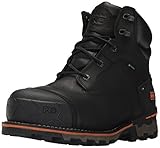






When storing boots for wintertime, lay them flat on a surface with room between pairs to aid ventilation. Store them near open windows to improve airflow. Avoid stacking boots for added warmth and stability.
Inspect boots annually for worn spots, frayed edges, missing parts and broken zippers. Replace torn pieces or replace zipper altogether. Have repair work done by qualified shoemaker.
For extra durability, treat boots’ seams with seam sealer to lock stitches together.
To extend life span of your boots, spray polish over rubber sole every six months.
Consider replacing old gloves with new ones. Gloves become sticky with age due to oil, perspiration and general grime build-up. Glove fibers gradually break down and start absorbing sweat. Eventually, glove becomes saturated and loses its ability to wick moisture away effectively. New gloves should fit snugly to minimize movement and friction.
Protect feet from wet floors with disposable paper towels.
Avoid getting wet feet when changing a tire on level ground. Fill tire treads with compacted gravel or sand. Cover exposed metal rims with duct tape.
Never leave boots unattended. Check for tears and stains weekly. Trim fingernails and cut excess hair around toe and heel area to help loosen debris stuck underneath.
Last but not least, ALWAYS WEAR WORK BOOTS!! Yes, I said it again. Don’t go anywhere without your work boots. Even though you think you can save money by skipping a purchase, trust me when I say you could end up regretting it later. Why? Because you never know when an accident might happen and cause you serious injury. Besides protecting your legs, feet and back, work boots also act as extra padding between your skin and rough terrain, helping to shield you from hazards such as sharp objects, glass, chemicals, mud, rocks and splinters. Plus, having your boots on allows you to walk faster and carry heavier loads with better balance. Now that’s something worth investing in!

